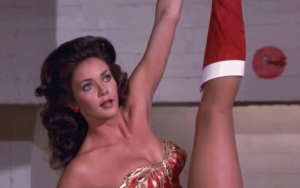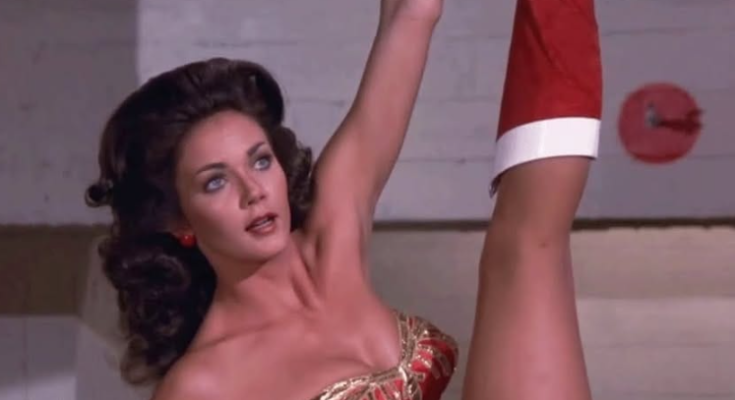HT14: The Box of Unedited Vintage Photos – For Mature Audiences Only
The box arrived with no return address.
Just a plain, beat-up cardboard rectangle with “HT14” scribbled across the side in faded marker. Nora almost threw it out, thinking it was junk mail. But something about the handwriting stopped her. It was familiar. Old.
She took it inside, dusted it off, and opened the flaps.
Inside, she found hundreds of old photographs.
Not digital prints, not glossy. These were matte, black-and-white, curling at the corners, some torn, others faded. Tucked on top was a yellowed note that simply read:
“For mature eyes only. These were never meant to be edited, erased, or forgotten. HT14.”
Nora’s heart skipped.
HT14 wasn’t random. It was a project her grandmother, Miriam, had once spoken about. Something mysterious, whispered late at night when wine had loosened her tongue. Miriam had been a photographer in the 1940s—one of the few women behind a camera during the war and the years that followed.
“HT14 was the folder they wouldn’t let me publish,” Miriam had said once, cryptically. “Too raw. Too real.”
Nora picked up the first photo.
A woman stood barefoot in a factory, hands raw and covered in soot. Her face was lined with exhaustion, but her eyes held defiance. Scribbled on the back:
“Margie, 1946. Worked 18-hour days. Lost 3 fingers in the press.”
The next photo showed a man and another man—holding hands. Not smiling. Just standing side by side on a city sidewalk. The era didn’t matter. Their love was clear. The back read:
“Frank & Lester, 1951. They were arrested three days later.”
The photos continued, each one rawer than the last.
One showed a back-alley abortion clinic, blurry and dim. Another was of a funeral for a Black soldier whose body had been sent home in a pine box—buried in a segregated cemetery. One photo depicted a protest outside a women’s shelter, signs reading “Unfit Mothers Don’t Deserve Rights”.
The further Nora dove into the box, the more she understood.
These were stories that had been erased from history books. Stories too “mature,” too difficult, too shameful for the public to see when they were taken.
Nora remembered the day Miriam’s studio had been shuttered in 1958.
She’d never really explained it. She had said something about “people in suits coming in and calling my work ‘unfit for publication.’” They took boxes. Boxes just like this one. Somehow, this one had escaped.
HT14 must have been her secret label for it—Hidden Truths, Folder 14.
Nora’s hands shook as she held one final photograph up to the light.
It was her grandmother.
Young. Stunning. In a field of wheat. Holding a camera.
But there was something else in the background—blurred figures, people with signs. One sign was just clear enough to read: “We Know What You Took.”
The note taped behind it was different. It wasn’t typed.
It was written to Nora.
“They said the world wasn’t ready.
But I believe you are.
These truths are painful, but they’re necessary.
Publish them. Show them.
Don’t let them die in the dark.
Love always,
Miriam.”
Nora spent the next few days digitizing the images.
She cleaned them up—not to erase the rawness, but to preserve what was fading. She researched the names on the backs, the places, the events.
Many had no digital record. These people had been completely lost to history.
Until now.
She created a website.
HT14archive.com – Unedited Vintage Photographs for Mature Audiences Only.
She included trigger warnings. Context. Resources. But she didn’t hide the pain.
The photos went viral.
Some praised her bravery. Others sent threats. A politician accused her of “trying to rewrite American history.” But survivors and descendants began reaching out. One woman said she had never seen a photo of her grandfather until that day—he’d been one of the protestors in front of the steel mill.
Another woman said she’d been born from one of the women in the abortion clinic photo.
“These images helped me forgive her,” she wrote.
Nora kept going.
She created documentaries. Lectures. Exhibits. Each image from HT14 became a window into the forgotten.
Over time, the public began to understand what Miriam had been trying to do. These weren’t just old photos. They were proof. Evidence of what people lived through—especially those the world tried to silence.
And while it had once been “for mature audiences only,” Nora saw it differently now.
“Maturity doesn’t come from age,” she said during a TED Talk, years later. “It comes from courage. The courage to look at the truth and not flinch.”
The original photographs are now preserved in the National Museum of Social Memory in Washington, D.C.
The label on the glass case reads:
HT14: Unfiltered America.
A collection once silenced, now speaking louder than ever.
And at the center of the case is that final photo of Miriam—camera in hand, eyes full of purpose.
She hadn’t been silenced after all.


